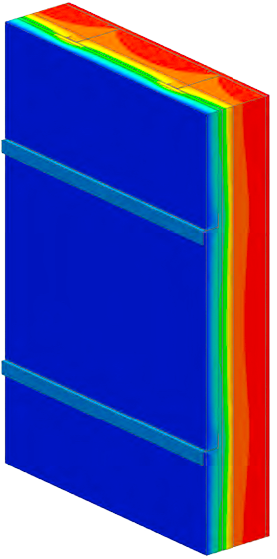WHAT IS Thermal Bridging?
Thermal bridging is an area or component with a higher thermal conductivity than the surrounding building materials.
Penetrations in the building envelope by highly conductive materials can transfer heat energy through the envelope, creating thermal inefficiencies. Aluminum, steel, and concrete components can form thermal bridges within the framework, unless a thermal break is implemented at transition points within the structure.
Thermal bridges can lead to increased energy consumption, carbon emissions, operational costs, condensation risks, and mold growth, negatively impacting a building’s energy performance.
There are three types of thermal bridge transmittances: point, linear, and clear field. The accumulation of these thermal bridges will significantly reduce the effective R-Value (thermal resistance) of building components that comprise a building.
point transmittance
Heat flow caused by intermittent locations including steel balconies, canopies, columns, and roof penetrations.
ClimaSpec Structural Thermal Breaks separate the internal and external structural elements that can reduce heat flow through the building thermal envelope.
Linear transmittance
Heat flow that occurs at junctions such as, foundation to wall transitions, shelf angles, and wall to roof transitions. Jambs, sills, and lintels at fenestration applications for windows and doors are also examples.
Thermal bridging can be minimized by incorporating a ClimaSpec Structural Thermal Break to separate the highly conductive building components.
Some thermal bridge examples of linear transmittances are shelf angles, concrete balconies, and wall to foundation or roof transitions.
Clear field transmittance
Heat flow caused by building components such as cladding attachments, steel framing and brick ties.
A ClimaSpec Structural Thermal Break can be designed into typical wall and roof details to reduce the heat flow through the building envelope.
Thermal break frequently asked questions will provide more clarity on the common questions that are asked when understanding thermal bridges and thermal breaks.


